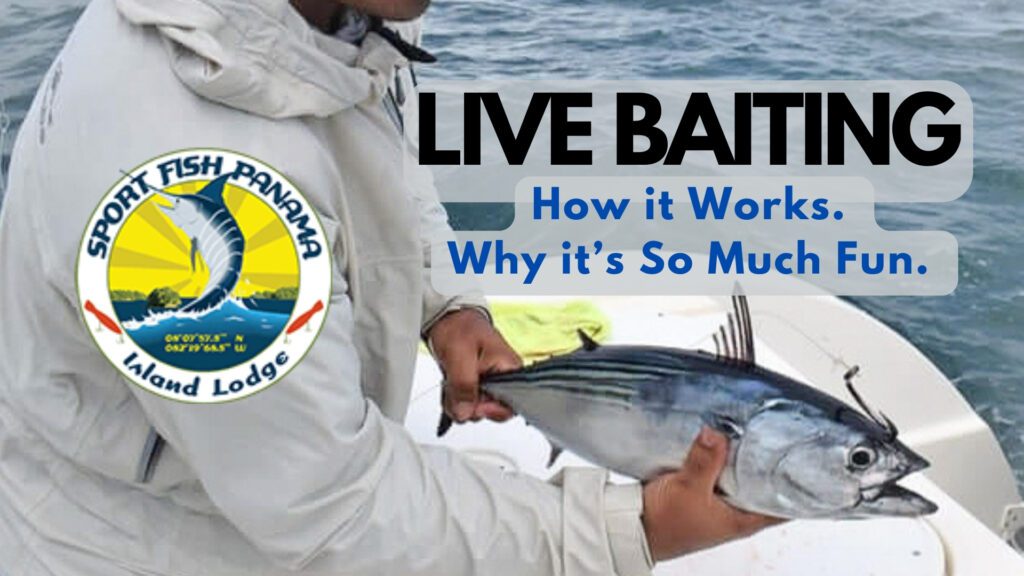Our part of the world is a great place to fish, but it’s a terrible place to be a bonito. These small, black tuna congregate in vast schools around the Gulf of Chiriqui. Everything eats them.
Bonito are a great bait for black marlin. Live baiting is a great tactic for targeting big yellowfin (in part because the size of your bait keeps it from being eaten by smaller tuna). Cubera snapper will come up and maul them—their first bite often shreds their bellies… The second bite will likely inhale the whole thing.
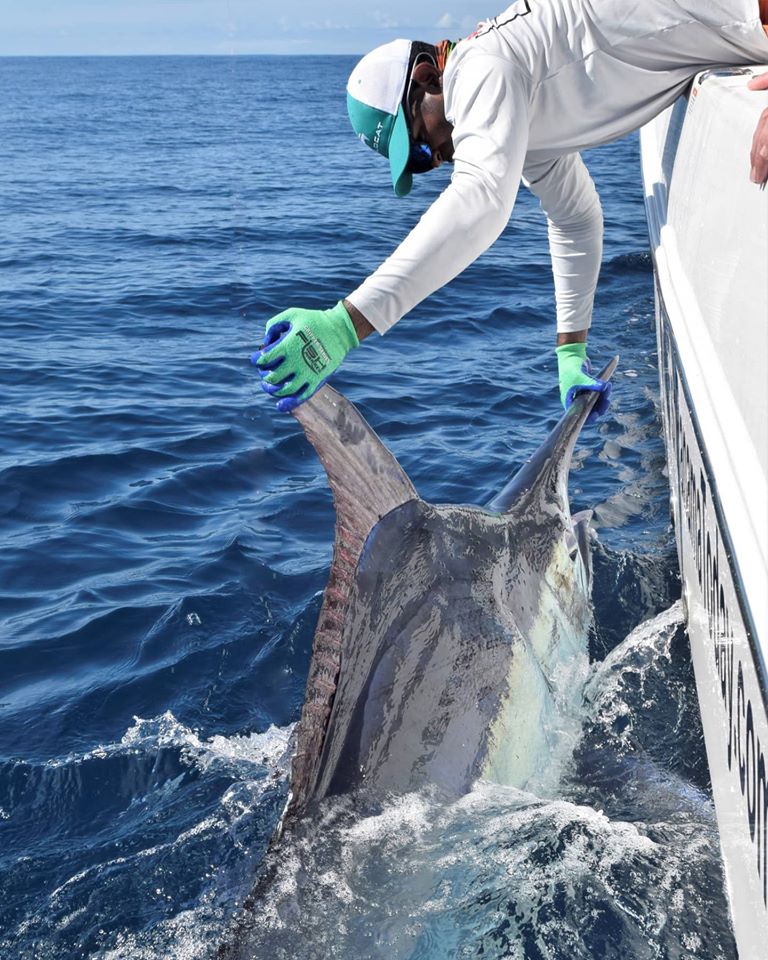
In fact, in our part of the world, you can catch all manner of fish while live baiting. The comb of a roosterfish swirling on one is awesome. A big dorado blasting a live bait is wonderful. Wahoo sometimes attack from beneath. When they do so, they will sometimes sky eight or 10 feet out of the water. If you’re lucky the circle hook will find its place, if you’re not you might watch half of your bait fall to the left, the other half fall to the right… Amazed by the sight of this unexpected, graceful striped torpedo… Around here, everything loves bonito.
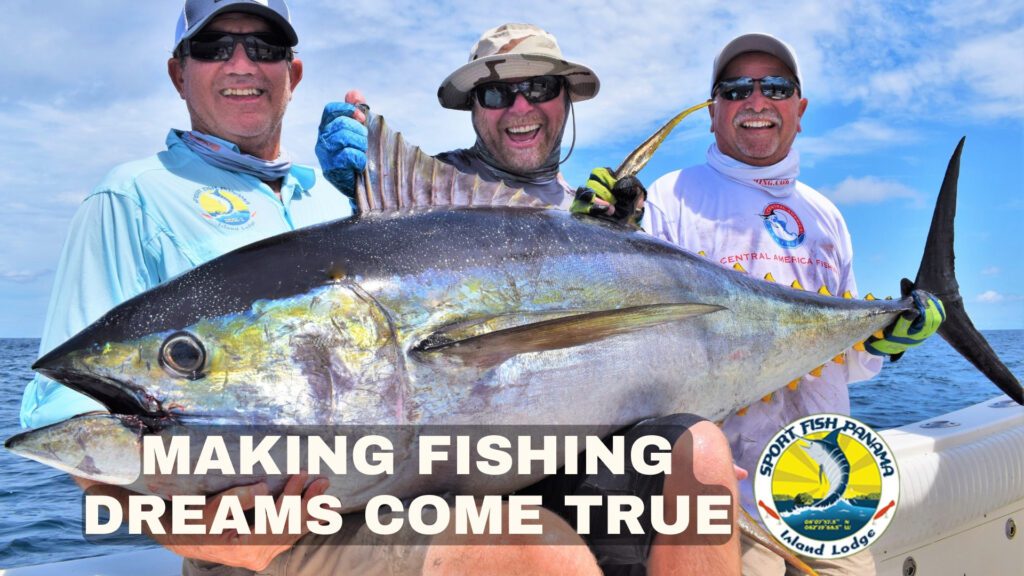
A Pillar of the Food Chain
Swarms of bonito are a pillar of the pelagic food chain in our part of Panama. Deepwater currents deflect off of bottom structure and head to the surface. As they do, they bring with them nutrient rich water that, as it comes into contact with light from the sun they set off blooms of phytoplankton. These blooms are food for all manner of small fish. The bonito are here to eat these little creatures.

When schools of bonito are thick and consistent, their presence is a beacon for gamefish. They congregate around high spots and banks—such as Hannibal Bank and rocky pinnacles around islands like Montuosa and Jicaron. This sets the stage for live baiting.
This is one of the best and most interesting things about live baiting. You only do it when the conditions are right. When you find a school of bonito that is being harassed… when you see marlin feeding or you know there are big tuna around, it’s time to put out the live baits.
What follows is a breakdown of how it works. It might look like a complicated process, but once you know all the pieces its pretty straightforward. Its also quite a bit of fun.
Catching Bonito and Tuna Tubes
Each of our boats are equipped with a set of tuna tubes. These is necessary hardware for live baiting.
We catch bonito by trolling Clark spoons or small squid heads. Sometimes we do this using planers, sometimes without. As soon as we unhook the bonito, we place them face down into the tubes.
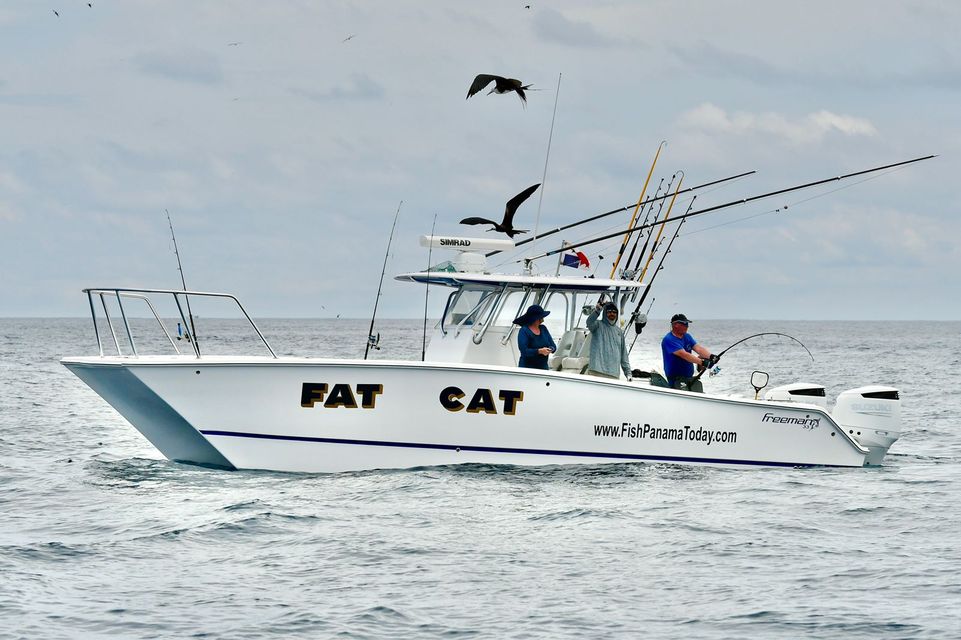
Bonito, like other tuna species, are known as ram ventilators. In order to survive, they must have a constant supply of water passing over their gills. In the water, bonito accomplish this by swimming constantly. Tuna tubes provide the same thing, pumping a constant flow of seawater up from the bottom of the tubes.
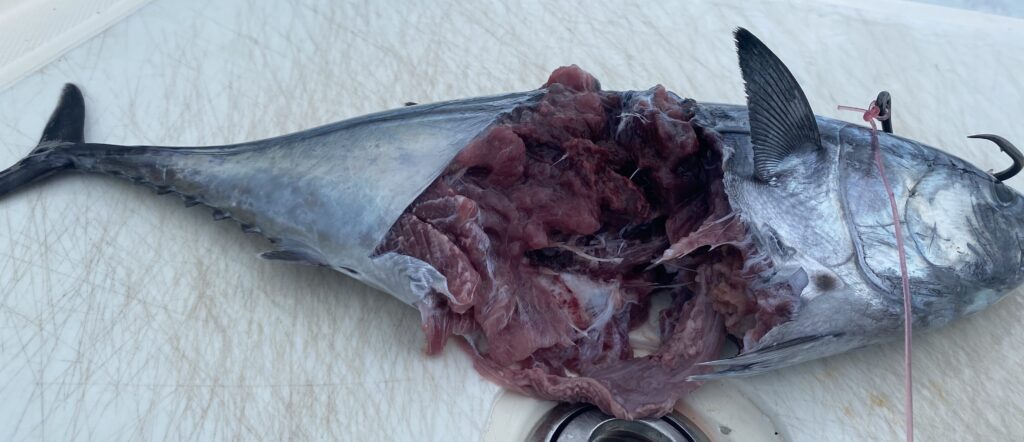
Bonito would die rapidly were you to place them in a standard bait tank. In tuna tubes, bonito may live for hours—especially if they were not hooked deeply. If a bonito comes up bleeding or is hooked bad, you may notice the crew keep it separate. Dead bonito make great snapper bait…
Rigging Live Baits
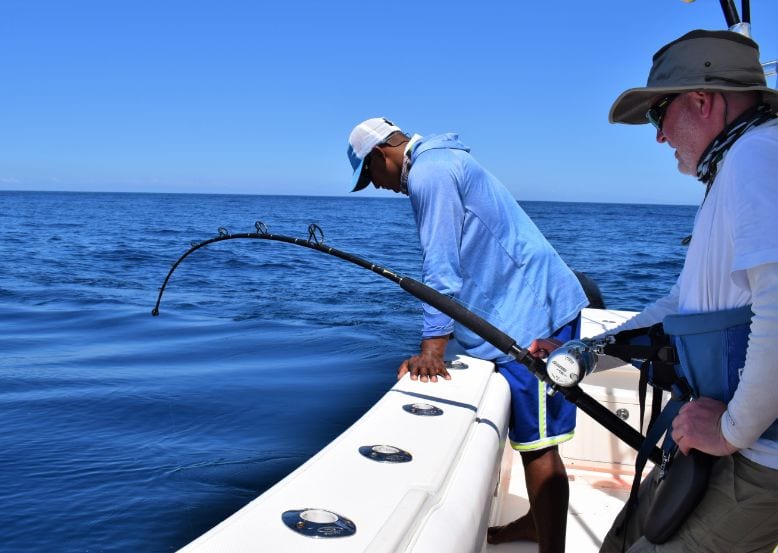
Most of the time, when live baiting we do so on our 50s. These reels are spooled with lots of line, can exert quite a bit of drag and are equipped with lever drags and clickers. Each of these characteristics is important.
The bonito are bridle rigged onto circle hooks. A bridle rig consists of a loop of wax floss tied to the bend of the circle hook. Our crew uses a live bait needle (it has an open eye, that allows it us to thread and unthread it without cutting the loop) to pass the floss through the soft tissue above the bonito’s eyes. We then thread the open end of the loop back over the point of hook. Next, we’ll spin the bait a half dozen or so times to draw the loop tight, before passing the point of the hook back through.
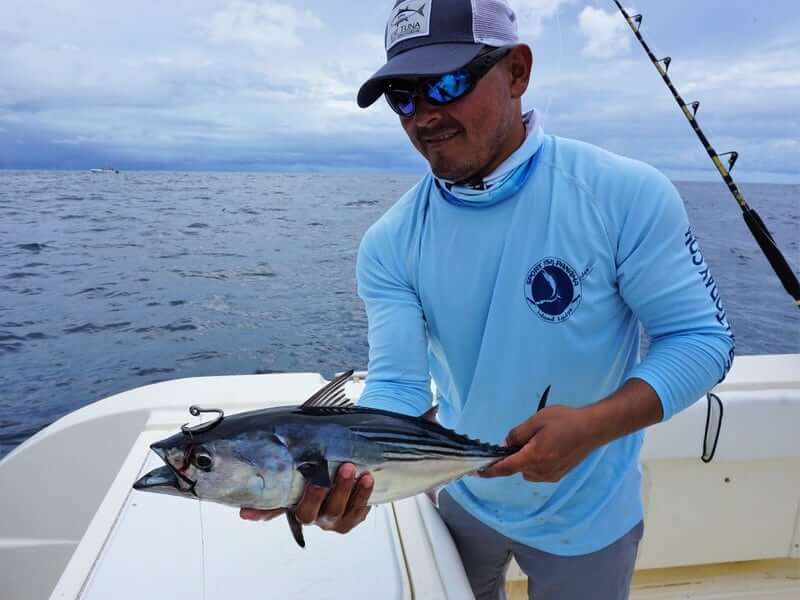
The result of a live bait that is effectively tied to the circle hook. This rigging allows the bait to swim freely. It also keeps the point of the kook from fouling itself back into the body of the bait.
It is called a bridle rig because its end result looks like a horse’s bridle.
The hooks we use are scaled to the size of the bonito. For bigger baits, we use bigger hooks. The hooks are snelled onto eight or so feet of leader. Depending on the size of the hook and the bait, the leader generally ranges between 150 and 300 pounds.
The leader is thicker and stronger than the mainline of the reel. This not only gives us greater abrasion resistance (protection from the bill of a marlin or the beating tail of a tuna), but means that when the fish is boat side our crew can put the heat on it… Pulling it hand over hand, for a boat side release (marlin or sailfish) or a gaff shot.
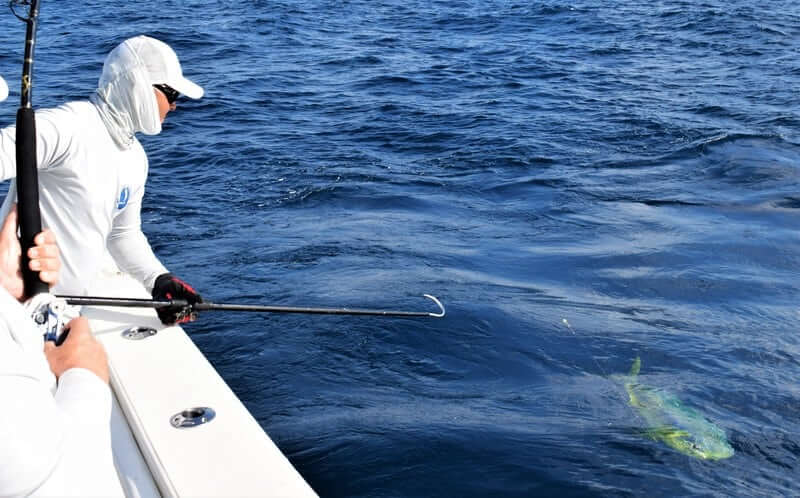
The other end of the leader terminates in a swivel. The other side of the swivel is a wind-on leader. This is 20 or so feet of 200-pound monofilament that ends in a dacron loop. The dacron loop is fastened to the mainline via a cat’s paw knot. This set up allows the angler to reel the wind-on leader through the rod tip and onto the reel.
On a big fish or after a protracted battle, the crewman might begin leadering the fish as soon as he can reach the wind-on. For a marlin release to be official, the mate must touch the leader or the double line (the end of the mainline is tied into a bimini twist—the bimini twist forms a loop that connects to the loop in the wind-on leader) must touch the rod tip.
We use wind-on leaders because they allow us to put more pressure on fish closer to the boat. They are also safer for the angler and crew.
Live Baiting: How The Process Works
When we find what we’re looking for—bonito being balled up, feeding marlin, tuna mashing bait up top or a roosterfish-infested stretch of bottom, we put out the live baits. Typically, we’ll deploy a bonito out of each outrigger. We’ll also sometimes run a smaller bait—a little bonito or a blue runner—down the middle, a bit further back.
The baits in the riggers are fished close to the boat—maybe 30 to 50 feet behind the transom. We run the line through the rigger clips, fastening them with a rubber band. The bonito are fished on the surface, we bump the boat into and out of gear to keep them in position.
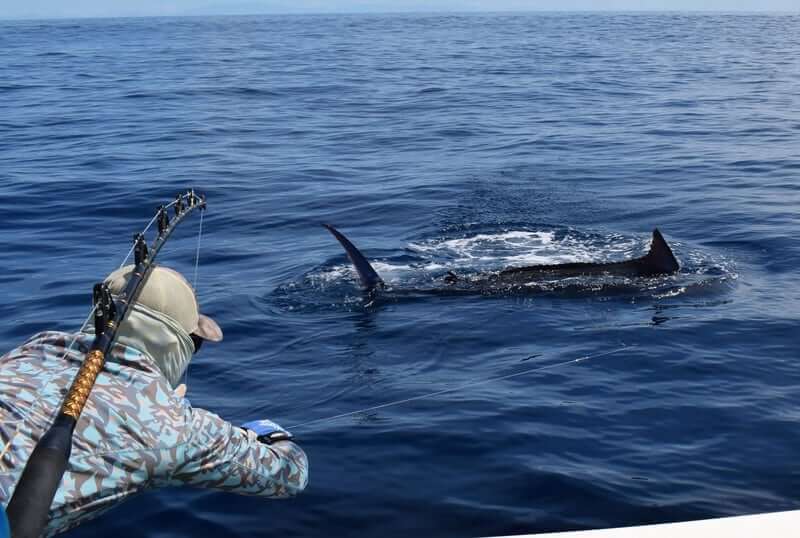
When a marlin piles on a live bait its super exciting. Sometimes there’s a swirl, sometimes it happens with a flash. The rubber band pops out of the clip and the reel’s clicker screams.
When a big tuna inhales a bonito, the reel sounds like it has been hooked up to an 18-wheeler that’s speeding down the highway.
This is where lever drags become important. The rubber band and the outrigger clip hold the bait in place. When a fish eats it, the rubber band snaps. The reel is set to just above free spool, with the clicker on. It’s placed this way so that line can come out, but there is enough resistance that the spool won’t backlash.
When this happens, the angler will throw the reel completely into free spool—allowing the line to fall off of the reel without resistance. There’s an art to this. It takes touch to be able to feed the fish without it feeling resistance while not letting the line turn into a bird’s nest.
We feed a marlin for five or six seconds. This allows it time to chew the bait, position it within its mouth and swallow it. If there’s resistance during this time, the fish will often let go of the bait.
After the drop back, the angler will push the lever drag up to strike.
He or she will do this in a single, steady motion. Once the drag is at strike, the angler will then reel until the line comes tight. This pulls the circle hook into place. When it all goes right, it lodges in the corner of the fish’s mouth.
At no point during the process does the angler set the hook or pull up on the rod. This type of thing works great with a j hook, but it will prevent the circle from doing its job.
Once you’re hooked up, it’s like fighting every fish you’ve ever caught—except this one will likely be bigger, more powerful and more exciting than the others. Once you’ve tangled with a big tuna or a black or blue marlin on a live bait, you’ll understand why we like to do it so much.
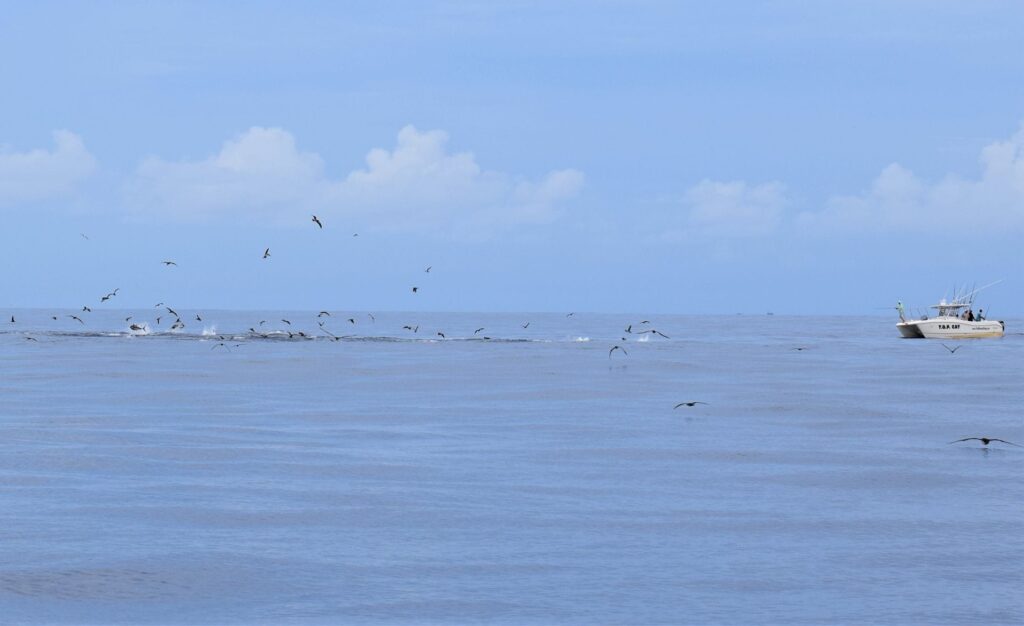
 (866) 245-1492
(866) 245-1492 

